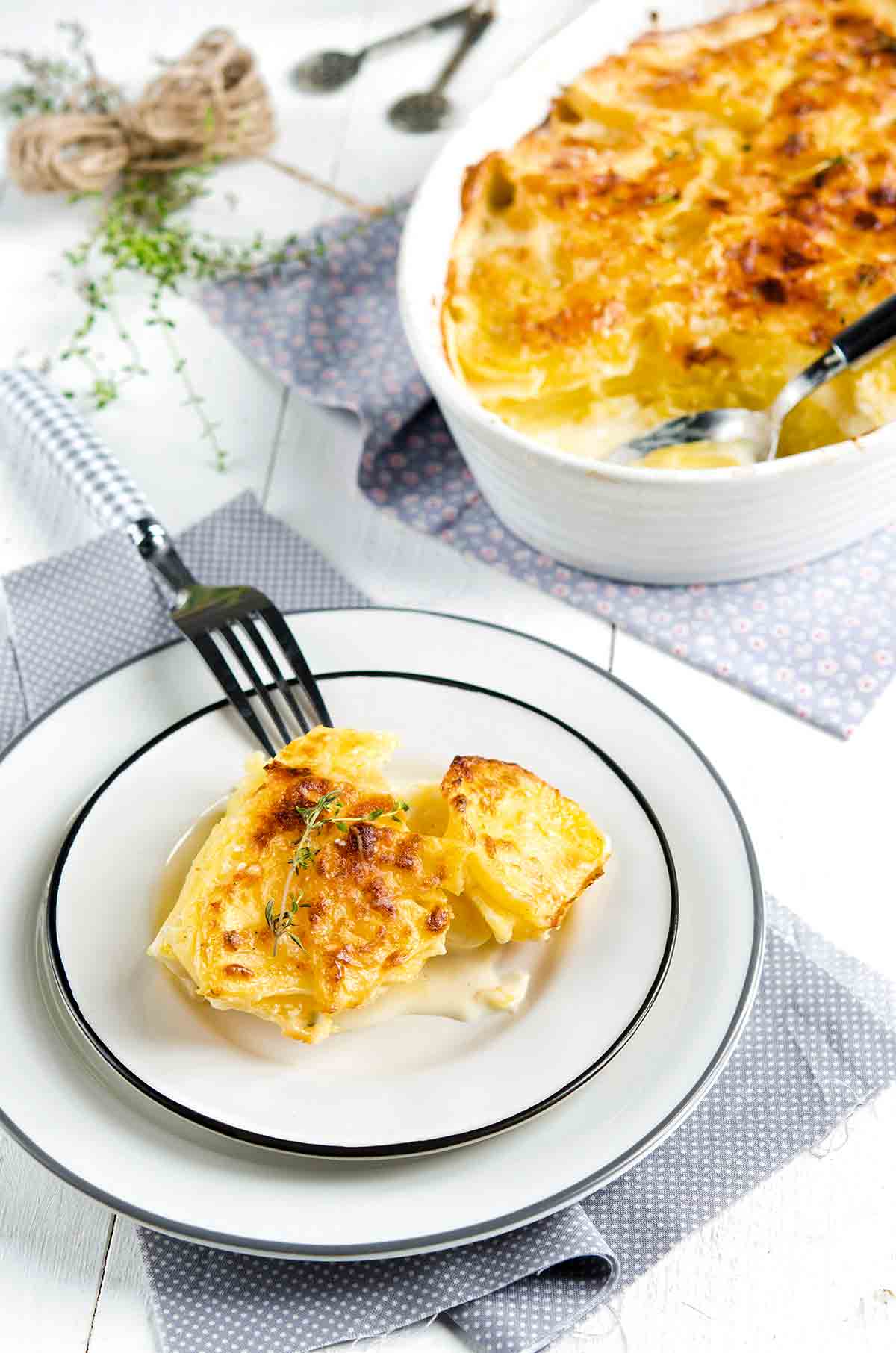
TL;DR (Quick-Answer Box)
- What it is: Thinly sliced russet potatoes layered in a savory cream sauce infused with thyme, garlic, and onion, topped with a bubbly layer of Cheddar cheese.
- Why you’ll love it: A decadent, cheesy, and comforting side dish, simplified and sped up by simmering the potatoes first, making it weeknight-friendly and holiday-ready.
- How to make it: Sauté onions, stir in aromatics, simmer with potatoes and bay leaves in a cream-stock mixture until almost tender, transfer to a baking dish, top with Cheddar, then bake until golden + bubbling.

Featured Review
Oh wow, these were so good! I did all the cooking in my cast-iron pan and used Yukon Golds instead of Russets. Otherwise, I followed the recipe. The Hub told me a bunch of times how much he loved them. 🙂 Hardly any leftovers with just the two of us eating. Ooops!
Lori Young
Jump To
These quick scalloped potatoes from America’s Test Kitchen are over-the-top creamy and cheesy in the best possible way. They’re also easy as can be. Thinly sliced potatoes are simply boiled in cream, smothered with cheese, and baked until crisp on top and tender throughout. Best of all, they come together in a snap and can be assembled ahead. Enough said.

Why Our Testers Loved This
Our recipe testers love that these creamy potatoes come together faster than traditional scalloped potatoes, thanks to par-cooking the potatoes in cream before baking. They also adore the crispy, cheesy topping. (Who wouldn’t?)
Notes on ingredients
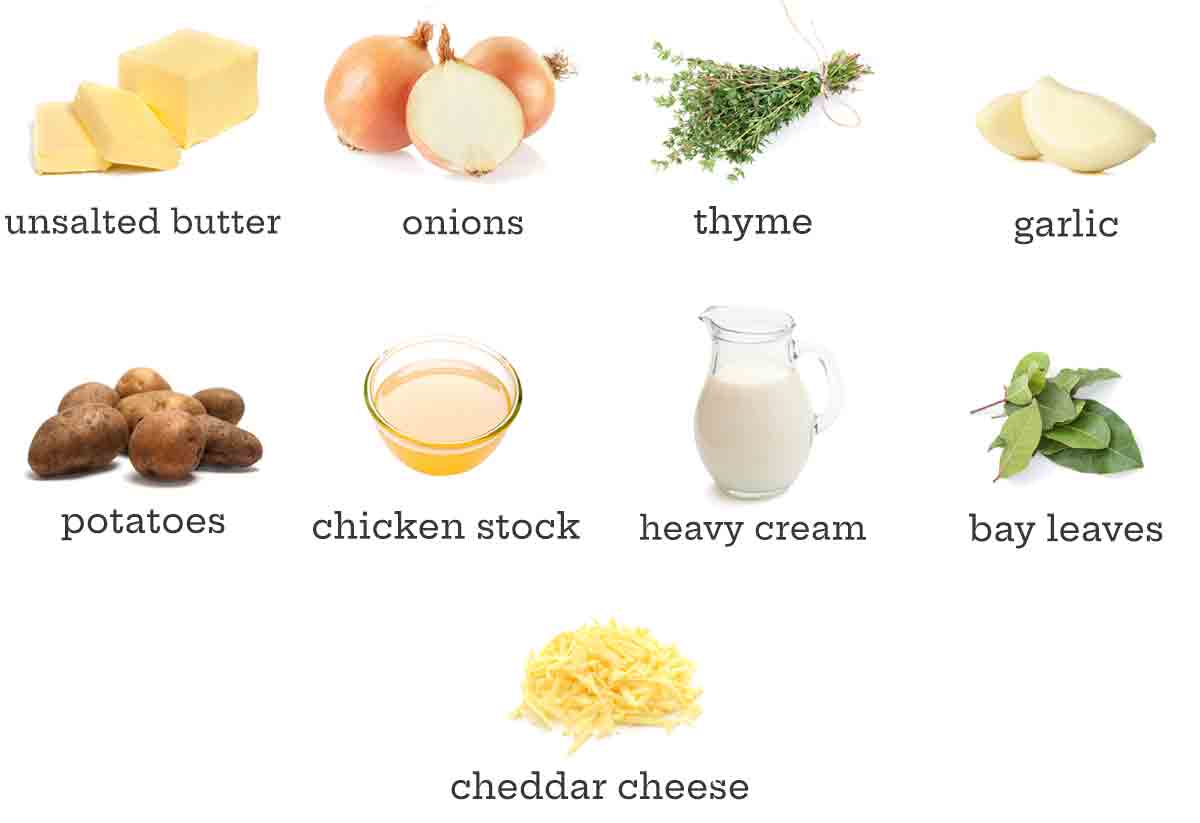
- Butter–it’s best to use unsalted butter here, but if you need to swap in salted, reduce the amount of salt in the recipe to 1 teaspoon.
- Chicken stock–if you use low sodium, no salt added, or homemade chicken stock, you may need to adjust the amount of salt in your cream sauce. Give it a quick taste after simmering the potatoes, and add salt if needed, keeping in mind that the cheese topping will add saltiness as well.
- Heavy cream–we’re all for keeping fat content in check, but these are rich and indulgent scalloped potatoes, and you want them to taste delicious. Use heavy cream here; milk or half and half won’t give you the same richness.
- Potatoes–you want a starchy potato that will hold up to baking. Russets are the best choice for this recipe, but Yukon Gold potatoes would also work well here.
- Cheddar cheese–stick with full-fat cheese here, and skip the temptation to buy pre-shredded cheese. Low-fat or pre-shredded cheese doesn’t melt well.
Your Scalloped Potato Questions, Answered
For best results, a mixture of the two. Start with your potatoes covered and cook until they are warmed through, then uncover and continue to cook until your cheese is melted, bubbling, and golden brown.
Yes, which makes these a perfect holiday side dish. You can simmer the potatoes in the cream mixture up to 1 day in advance, then pile everything into the baking dish and refrigerate until you’re ready to bake them.
You can, but we don’t recommend it, particularly if the potatoes are not fully cooked. Cream sauces can separate and turn grainy, and the potatoes can turn an unappetizing shade of grey. If you do want to freeze the potatoes, do so after they have been fully cooked and cooled, then rewarm them in the oven until heated through.
Traditional scalloped potatoes are made by cooking layers of potatoes with onions in cream, while potatoes au gratin are cooked with cheese or cheese sauce between the layers of potatoes, and are often topped with bread crumbs. Potatoes Dauphinoise also incorporates cheese, but uses a stronger flavored variety, such as Gruyère.
Pro tips & troubleshooting
- This recipe is designed to be made in a square 8-inch pan, like the one you use for brownies. You could also make it in an 11-by-7-inch pan, but if you want to use something larger, like a 9-by-13-inch baking dish, double the recipe.
- Try to cut your potato slices to the same thickness so that they cook evenly. A mandoline is a great tool for this.
More Elegant Potato Recipes
Skillet Potatoes for Two
30 mins
Twice-Baked Potatoes With Bacon and Cheddar
1 hr 30 mins
Potato Galette
2 hrs
Want to save this?
Write a review
If you make this recipe, or any dish on LC, consider leaving a review, a star rating, and your best photo in the comments below. I love hearing from you.–David
Featured Review
It’s a cold rainy day here. I’m hosting family dinner, soooo I doubled everything, as it had to feed seven, and I wanted to have leftovers for lunch. I followed the recipe, and my only change was more cheese, but that’s a family preference. This was far easier than the old old school recipe I usually use!
Heather
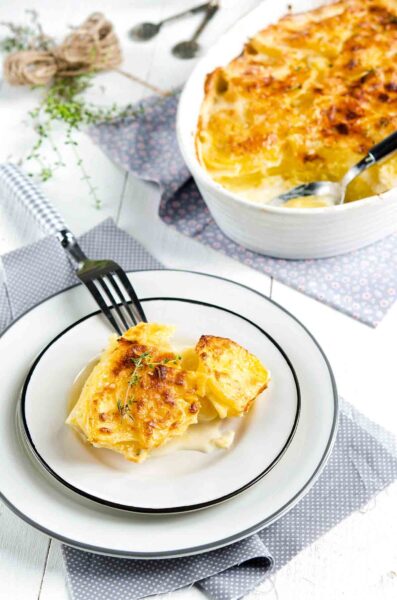
Scalloped Potatoes
Ingredients
- 2 tablespoons (1 oz) unsalted butter, plus more for the baking dish
- 1 medium (8 oz) onion, chopped fine
- 1 tablespoon minced fresh thyme or 1 teaspoon dried thyme
- 2 garlic cloves, minced
- 1 1/4 teaspoons salt
- 1/4 teaspoon freshly ground black pepper
- 2 1/2 pounds russet potatoes, peeled and sliced 1/8 inch (3 mm) thick
- 1 cup store-bought or homemade chicken stock
- 1 cup heavy cream
- 2 bay leaves
- 4 ounces Cheddar cheese, shredded (about 1 cup), or more to taste
Instructions
- Preheat the oven to 425°F (218°C). Adjust the oven rack to the middle position and lightly butter an 8-inch (20-cm) square or an 11-by-7-inch (28-by-18-cm) baking dish.
- In a Dutch oven over medium-high heat, melt the butter. Add the onion and cook until softened, 5 to 7 minutes.
- Stir in the thyme, garlic, salt, and pepper and cook until fragrant, about 30 seconds. Add the potatoes, stock, cream, and bay leaves and bring to a simmer.
- Cover and reduce the heat to medium-low. Simmer until the potatoes are almost tender, 7 to 12 minutes. The potatoes are ready when the tip of a paring knife can easily be slipped into a slice with just a little resistance. Don’t overcook the potatoes or you’ll end up with mushy scalloped potatoes.
- Discard the bay leaves and carefully transfer that luscious potato and cream mixture to the buttered baking dish. Use the back of a spoon to gently press the potato slices into a fairly even layer. (You can cover and refrigerate the scalloped potatoes for up to 24 hours.)
- Sprinkle with the Cheddar and bake until the sauce is bubbling, the edges of the potatoes are crisp, and the top is golden brown, 10 to 15 minutes. (If the scalloped potatoes were refrigerated, cover the dish tightly with buttered aluminum foil and bake in a 400°F (200°C) oven until warm throughout, 25 to 45 minutes. Uncover, top with the Cheddar, and continue to bake uncovered until the Cheddar is lightly browned, about 20 minutes.)
- Let the casserole cool for 10 minutes before scooping into it with a spoon and heaping creamy cheesy potato goodness onto plates.
Notes
- If you want to prepare these potatoes in a 9-by-13-inch baking dish, double the recipe.
- Use a mandoline for evenly sliced potatoes.
- The finished scalloped potatoes can be stored in a covered container in the fridge for up to 3 days, or frozen for up to 1 month. Don’t freeze before baking.

Explore More with AI
Nutrition
Nutrition information is automatically calculated, so should only be used as an approximation.
Recipe Testers’ Reviews
Holy hell, are these scalloped potatoes good. They’re super rich in a good way and not in an OMG-I-can’t-move way. We’re potato people, so I served these as a main dish with various toppings—like super deluxe baked potatoes—and everyone came away happy. They’re a lovely holiday or special make-ahead side dish as well as an option for weeknight dinners thanks to those make-ahead directions.
They only took about 30 minutes to get from whole spuds to the casserole dish. Next time, I’ll decrease the amount of dried thyme. If I chose to use fresh, I’ll toss in the whole stem and pluck it out when I fish out the bay leaves. I’ll also slice the potatoes a hair thicker as they cooked quickly (I only needed about 7 minutes simmering) but clumped a bit while simmering and got a little too soft while baking.
The casserole stays warm quite a while and tastes just fine on the warm side of room temperature, making it lovely for a buffet.
This scalloped potatoes recipe was easy to make. The result was a crispy-on-top, tasty dish of scalloped potatoes.
I used yellow potatoes instead of russet. Using a mandoline made quick work of slicing. It took about 10 minutes in the oven for the edges to get crispy and bubbly. I used an Emile Henri pan so I just transferred the potatoes from the stove to the oven in the same pan.
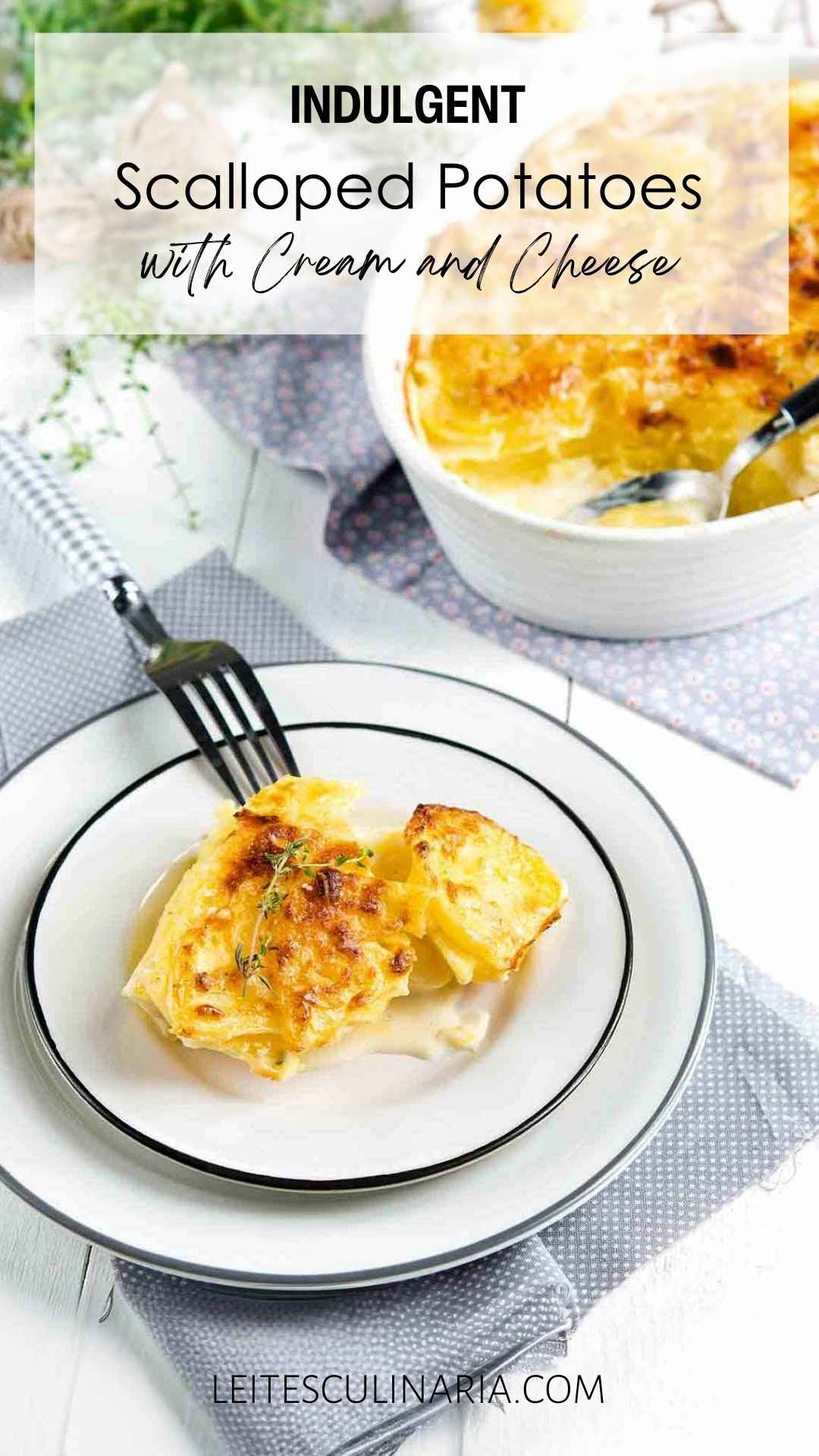
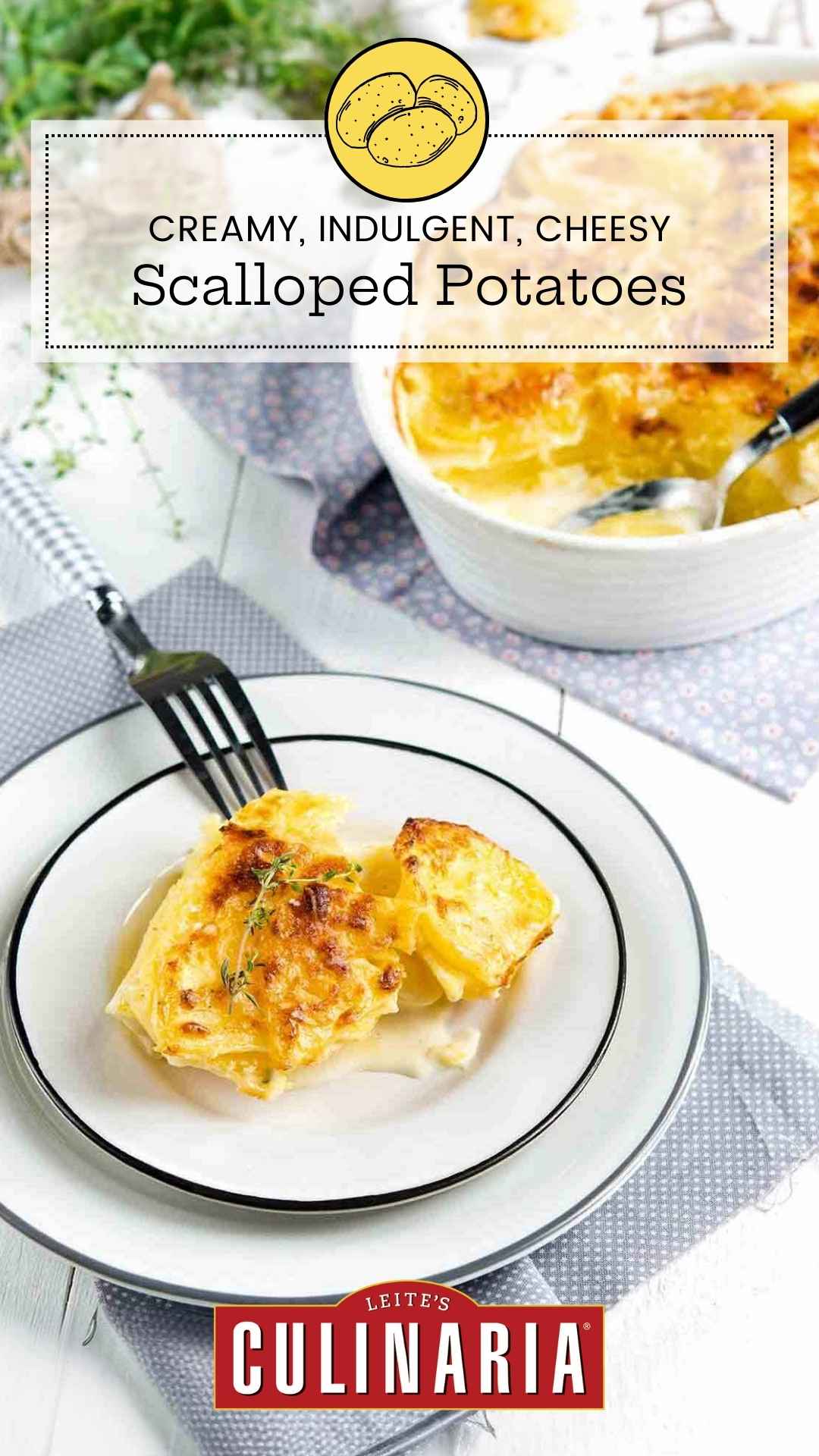
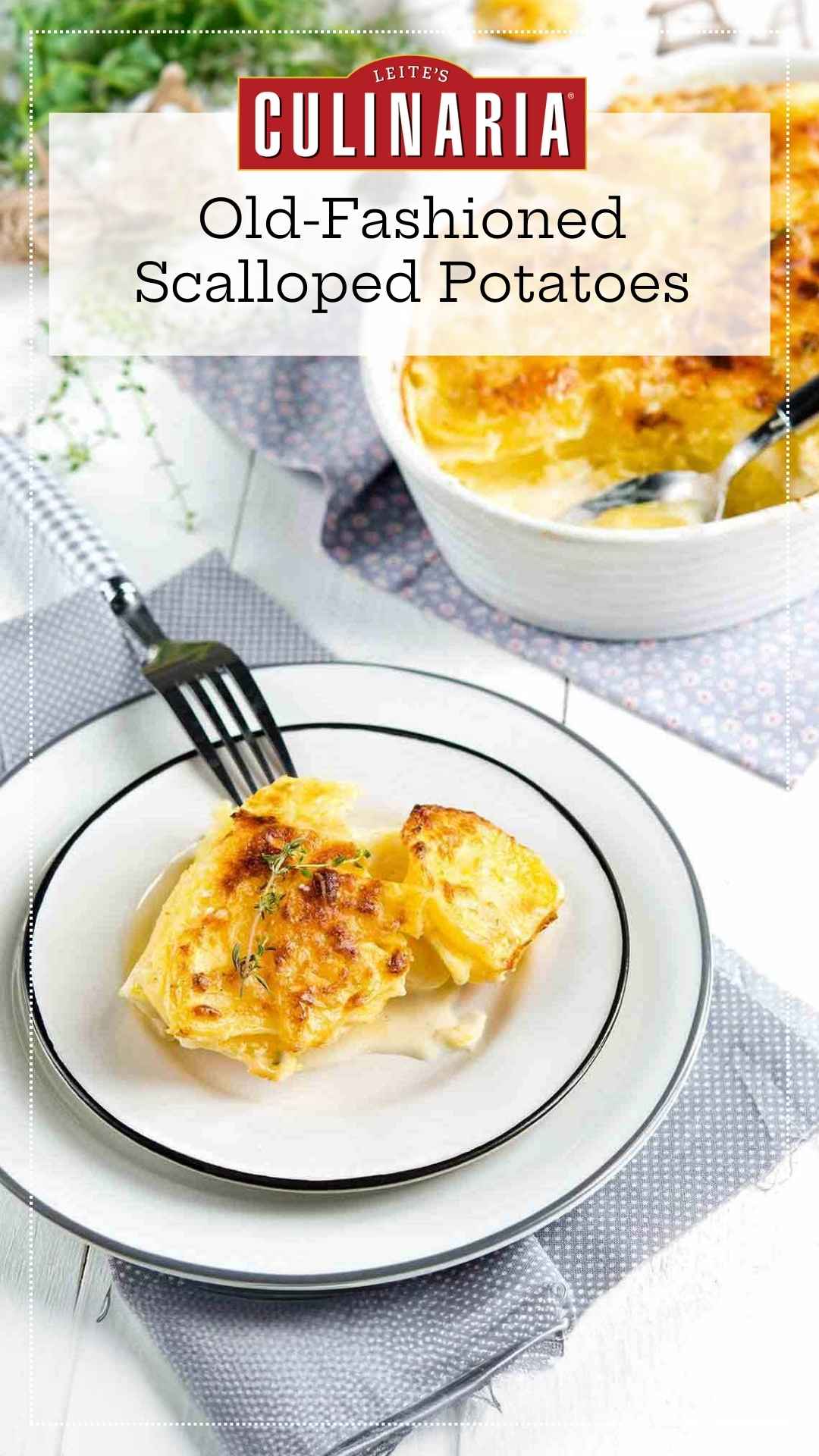
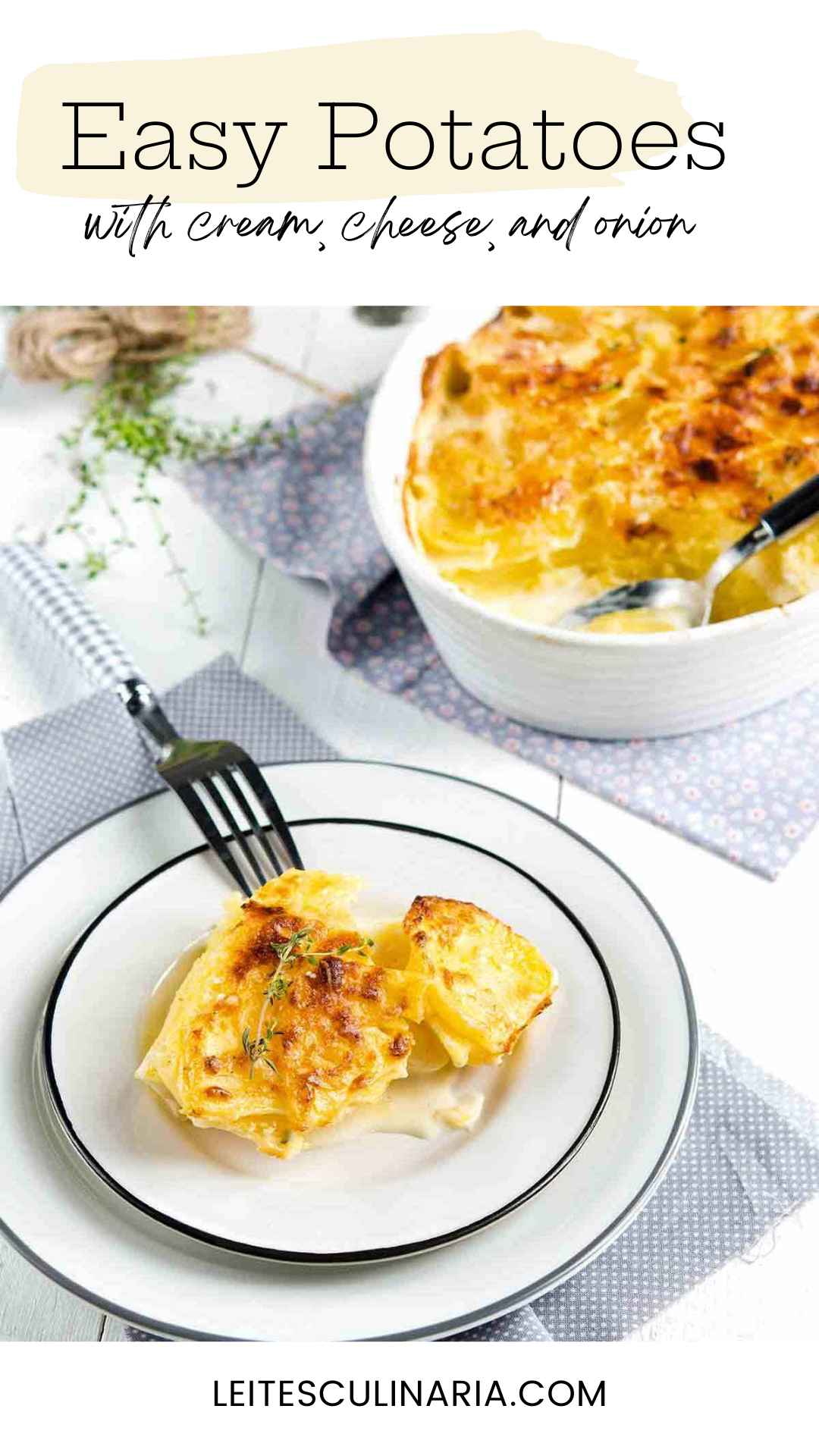
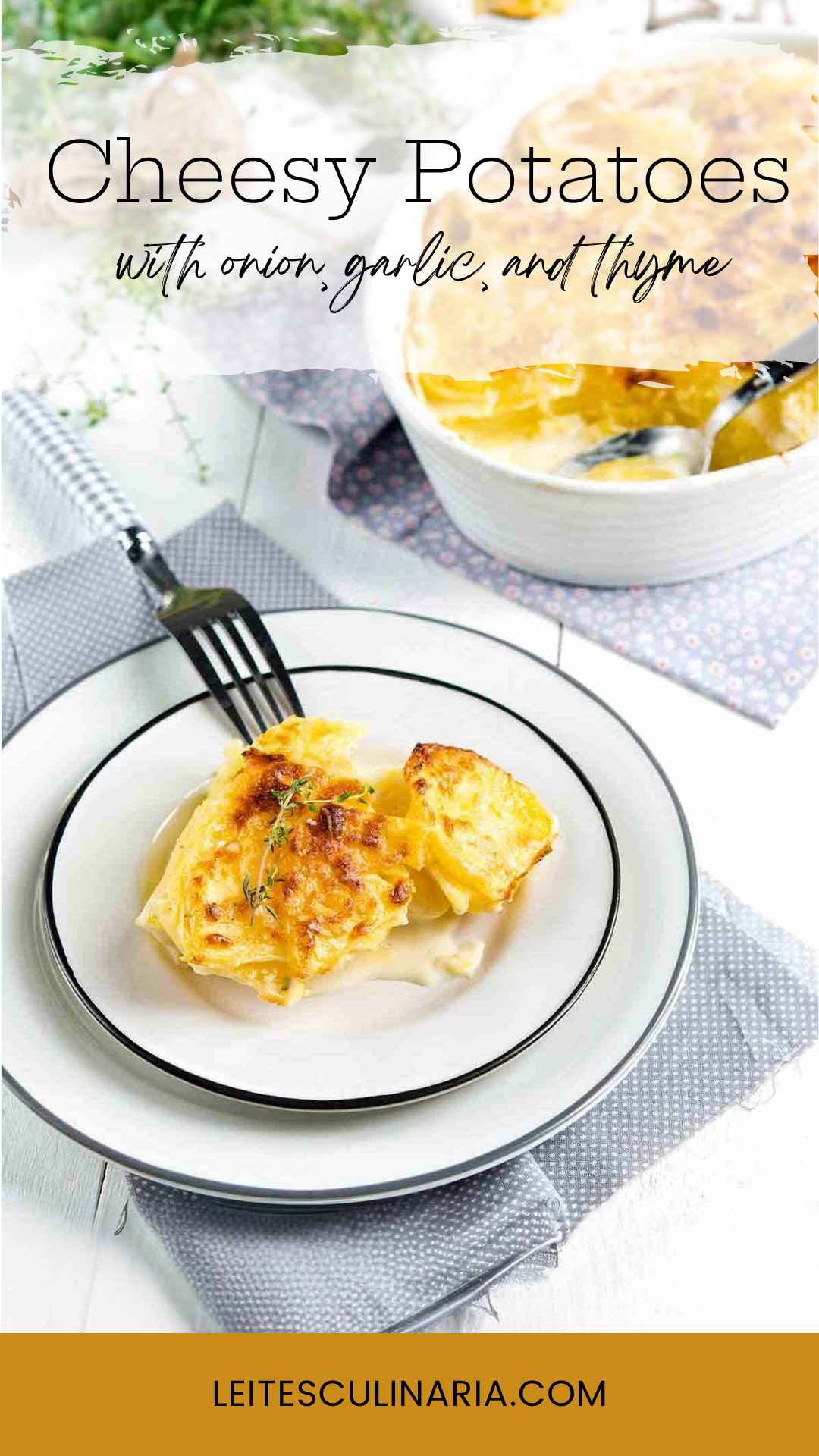
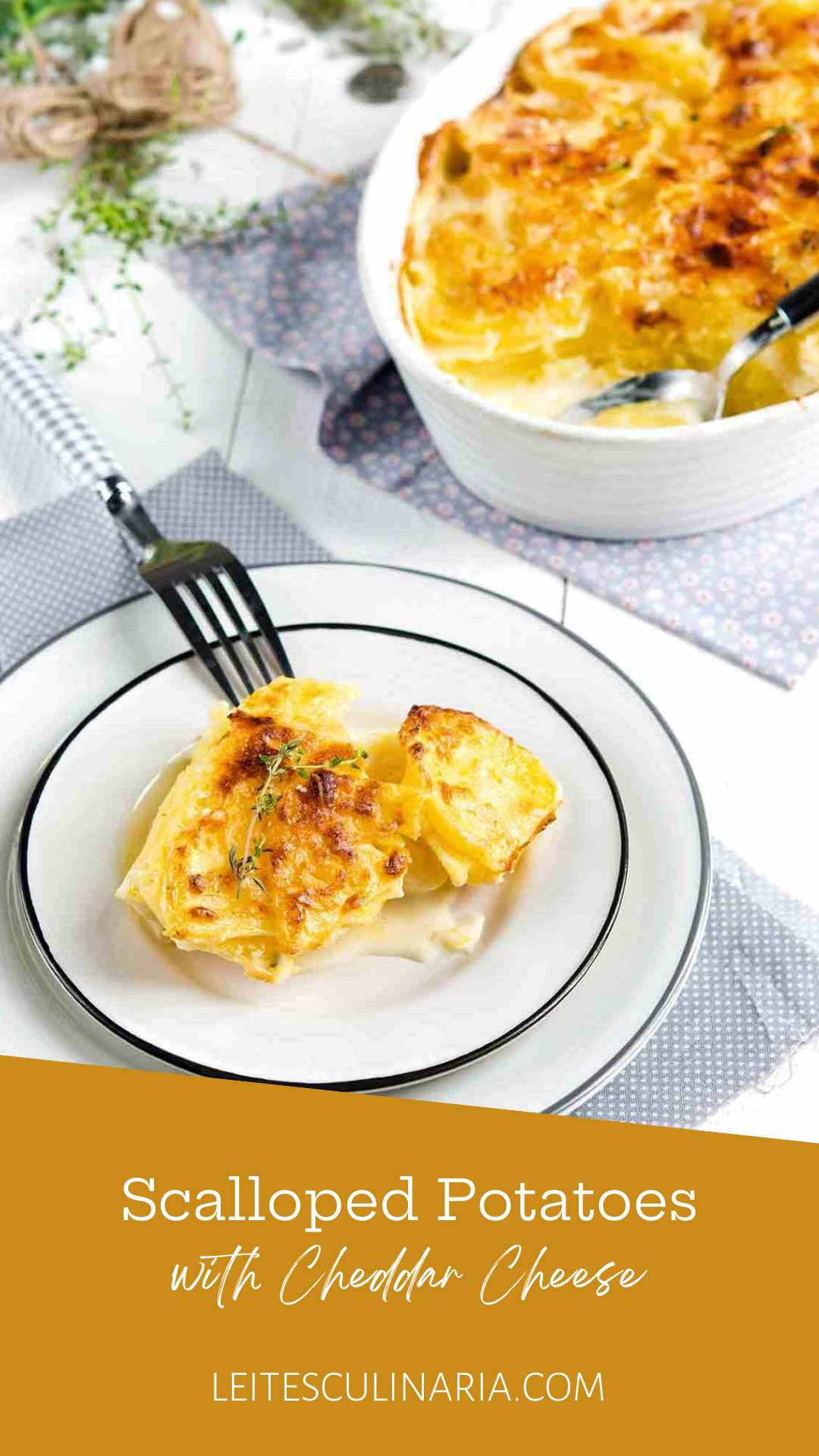
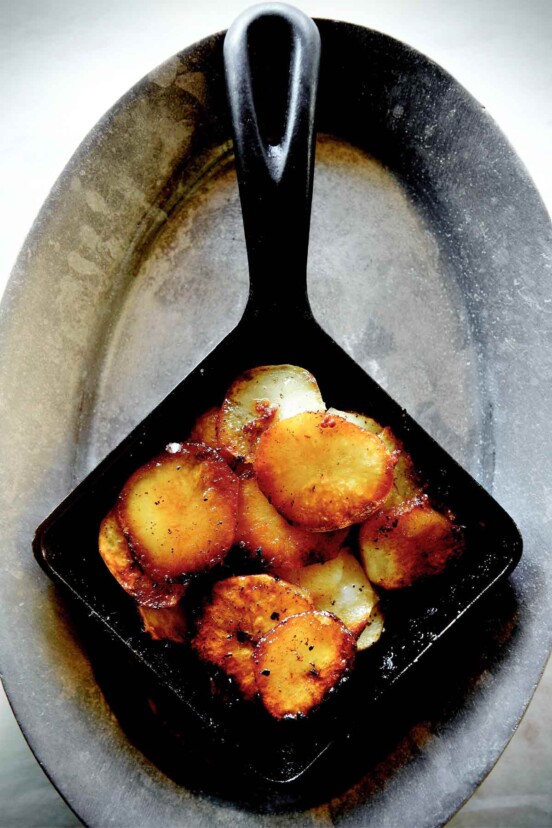
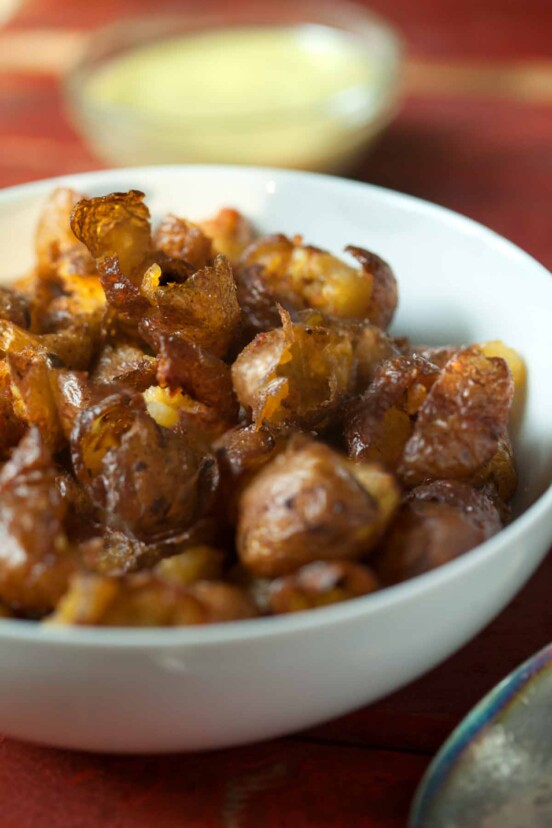
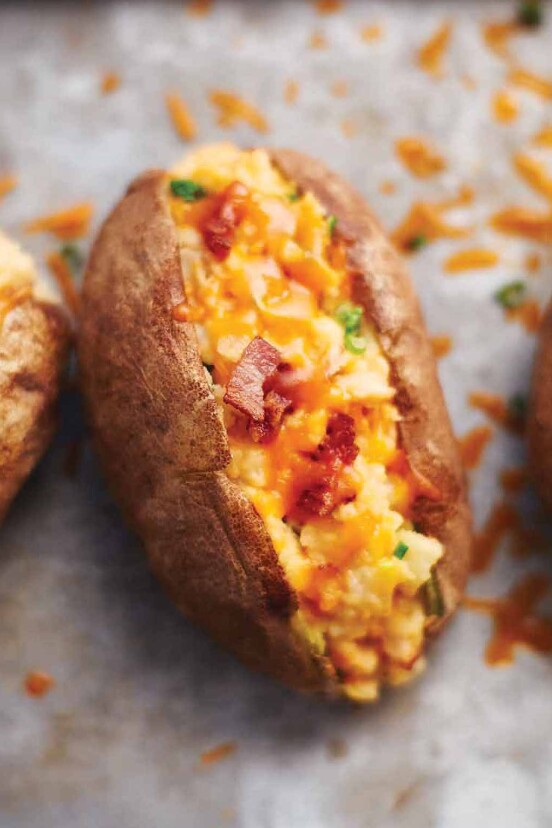
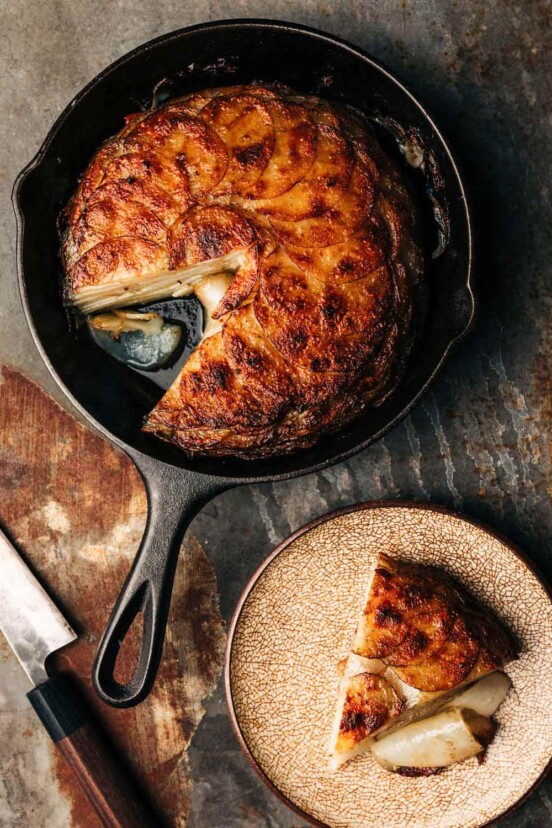











These scalloped potatoes are my favorite—always a hit, never leftovers, kinda dish. We recently became empty nesters, and without the constant houseful, I have had to scale everything down for just the two of us. I made these the other day and scaled down the potatoes, but completely had a blonde moment and didn’t scale the liquids. I ended up with soup. I angrily fished out some taters but wasn’t about to toss the whole dish. Into the fridge it went.
After some thought, as the weather is changing, I wanted to try your New England Clam Chowder. I (successfully) scaled that down to 4–6 servings, reheated my scalloped soup, puréed that, and added it instead of the milk/cream. The soup was delicious—smooth and velvety texture and lots of flavor! MacGyvered? Yes, but delicious nonetheless! Thanks for the save!
Bbqgoddess, this is peak kitchen ingenuity. Empty-nester scaling can be tricky, and, while we’re (thankful) bereft of kids, I’ve absolutely had the “CRAP, didn’t scale the liquids” moment myself. Turning that too-loose potato bake into a silken base for New England Clam Chowder is total genius-osity.
For next time with the scalloped potatoes: hold back a bit of cream until you see the level in the pan, and bake uncovered so excess moisture evaporates. The potato starch will help it thicken as it rests.